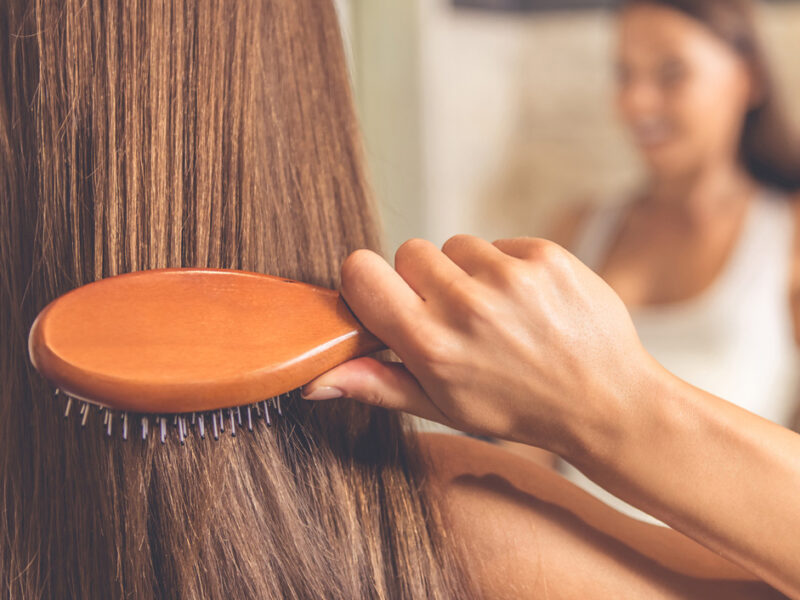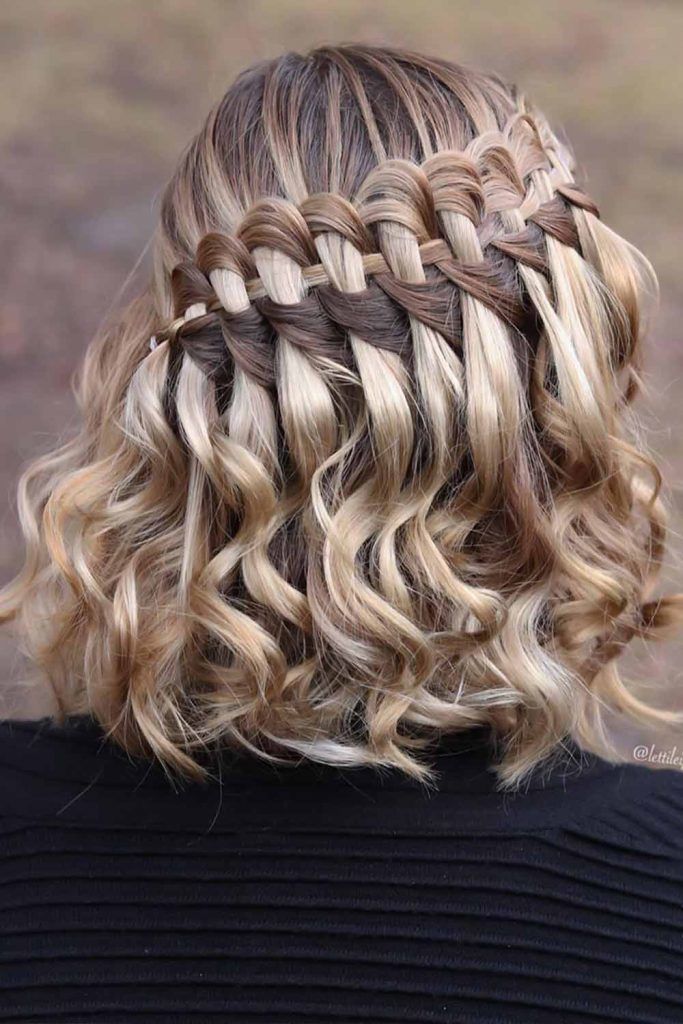Table Of Content
- Sonam Kapoor swears by this traditional technique to maintain hair health and volume: ‘Call me old fashioned…’
- Sanitizing Wooden Brushes
- How Often Should Hairbrushes Be Cleaned?
- Wipe it Dry
- Scalp care basics: simple tips to help you take care of dry, itchy or oily scalps
- How to Effectively Clean Your Hairbrushes, According to Experts

Here are more household uses for vinegar, while you have it out. Fill a bowl or your bathroom sink with lukewarm water and a squeeze of shampoo or mild dishwashing liquid. Start by using your fingers to pull up hair that’s already close to the top. Then use a pintail comb, tweezers or a brush-cleaning tool to pull hair that’s stuck to the base of the brush.
Sonam Kapoor swears by this traditional technique to maintain hair health and volume: ‘Call me old fashioned…’
The hair is all gone, so it's time to give the brush a good soak to loosen up any dirt and grime. It turns out you actually don’t need to brush your hair that often. Cleaning your hairbrush may not be at the top of your to-do list, but it is a beauty chore worth doing. After all, a great hairbrush can only stay that way if you take proper care of it, and spending a little TLC with your brush will also help ensure it works better. Wirecutter is the product recommendation service from The New York Times.
Sanitizing Wooden Brushes
For someone at home, she suggests using this spray one to two times per week. But aside from taking out the hair and maybe running it under water (if we're feeling ambitious), most of us rarely even think about giving it a good scrub. That's why, during some recent TikTok scrolls, I was shocked when I came across multiple videos of people not just rinsing it, but actually taking out the bristle pad, soaking it and giving the brush a deep clean. Follow these simple steps to keep hair shiny and healthy with a properly maintained brush. For insight on tending to your hairbrush, we consulted a trichologist—an expert in skin and hair—and two hairstylists who clean dozens of brushes a week. While a good cleaning and a maintenance routine can help keep your hairbrush in good shape, there comes a time to retire your brush.
How Often Should Hairbrushes Be Cleaned?
How to clean your hairbrush, according to experts - TODAY
How to clean your hairbrush, according to experts.
Posted: Thu, 04 Jan 2024 08:00:00 GMT [source]
Just like your toothbrush, your hairbrush can harness bacteria if it isn't cleaned on a regular basis. Depending on how often you use it and what type of hairbrush it is, you may need to clean it anywhere from once a week to once a month. If you use a plastic or laminate brush, you can submerge it in the suds. You may notice some of the fuzz is starting to loosen from your brush’s surface, and your sink might look a bit cloudy.
How to Clean Hairbrush: Hairstylists Share Their Tips - Glamour
How to Clean Hairbrush: Hairstylists Share Their Tips.
Posted: Tue, 03 Oct 2023 07:00:00 GMT [source]
Once it’s done soaking, rinse thoroughly and air dry completely before using again. If you’re someone who uses styling products or hot hair tools often, she recommends more frequent washes to get the debris out. For most types of brushes, such as a round brush, teasing brush, paddle brush, or flat brush, you can use the same cleaning rules listed above.

Removing Hair
Anabel recommends mixing in either your regular shampoo or two tablespoons of baking soda before submerging the brush. Don’t worry too much about buying a specific product because these home remedies can work just as well. There’s the hair we’ve shed (which can be anywhere between 50 to 100 strands a day) plus, any product build-up that’s accumulated along the way (hello, dry shampoo). But for brushes that are used for your edges, Hill recommends washing them weekly.
Brushes made out of natural bristles, wood, or cork, Hill says, require more TLC. “Natural fiber brushes should not be submerged in water,” she says. For these, she recommends spritzing a mixture of shampoo and water from a spray bottle all over the bristles. Then go in with your hands to massage the bristles or use a clean toothbrush to loosen any gunk or product residue left over and rinse with warm water before laying it out to air dry.
If you have a particularly gunky brush, you can add a bit of baking soda to your toothbrush before scrubbing. On another note, here is how often you need to change your toothbrushes. You’ll first want to become more diligent about removing the shed hair every time you use your hairbrushes. Removing the excess hair buildup helps prevent unnecessary tugging or snagging on shed hair that's been left in the bristles, says James. Weekly brush cleaning is especially a necessity if you're experiencing an itchy, red inflamed scalp; that way, you ensure you're not causing any additional irritation. Dr. Piliang recommends the average person clean their brush every one to two weeks.
How to Effectively Clean Your Hairbrushes, According to Experts
In the video, they poured the water-soluble glue all over the brush and left it to dry. Once set, it just peels right off, along with the hair and gunk. While many users were fascinated and impressed by the unique technique, others noted that the brush should be sanitized afterward to ensure full safety. "Dander or dead skin cells appear in the hair and flake off in large numbers," says Dominic Burg, PhD, chief scientist and hair biologist at Evolis Professional. "It's quite normal to shed skin, as it's constantly replenishing itself."
Like the rest of the skin on your body, your scalp regularly rejuvenates itself, and dead skin cells can slough off. If you brush your hair regularly, you’re both helping and encouraging the process. This means you might notice tiny cells form into larger clumps on your brush over time. If you don’t clean your brush often, that lint buildup might eventually turn gray. “First, make sure to remove all hair and debris from the bristles,” Faulk explains. If you’re already in the groove of cleaning your brushes, you may be able to do this with your hands.
Learn how to clean hairbrushes to remove dirt, hair, and product buildup. All these things contribute to a hairbrush that not only looks unsightly but could also do your freshly washed hair more harm than good. Like hairstylist Leigh Hardges mentioned, boar-bristle brushes are super gentle on fine and course hair by gently detangling strands without excessive pulling.
However, if you're looking for more of an everyday brush or a brush to use with a hair dryer, "there are boar-bristle brushes that are much wider, on a flat head, that grip the hair and smooth it," she says. Shorter also notes that flat brushes like the Flex Brush or Wet Brush provide more room for the hair to filter out so that it dries quicker and easier. However, if you're looking for a boar-bristle brush for a bouncy blowout, Shorter recommends a round brush version like the Y.S.Park or Ibiza Hair round brushes. Kapoor, known for her impeccable style and beauty, disclosed that she still adheres to the age-old tradition of using a tangle teezer or a hairbrush to stroke her hair a hundred times.
Cleaning lint and strands of hair out of a hairbrush is simple. According to the American Academy of Dermatology, it’s normal to shed 50 to 100 hairs a day. No matter how often you use your hairbrush, it has the ability to act like a sponge. This means it can trap all sorts of residue in its bristles, both from your hair and from the environment. Soiled grates are not only unsightly, they're actually unsanitary and unsafe.






